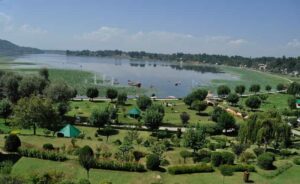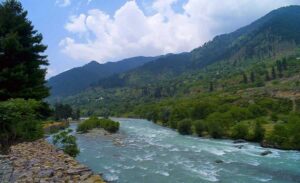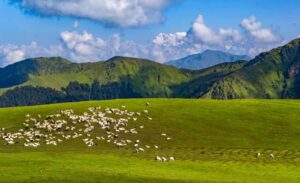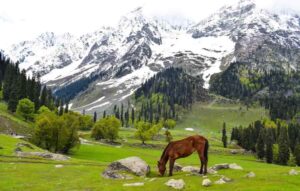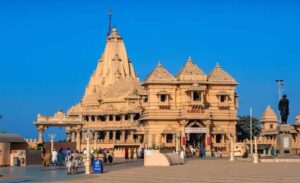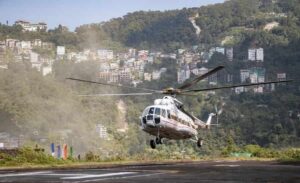Dal Lake, Srinagar
Dal Lake is a picturesque water body that offers some of the most spectacular imageries. Known for its splendid backdrop and blooming gardens, this immensely popular lake of Jammu Kashmir is a favorite hotspot for both national and international tourists. It offers the tourists a serene environment of tranquility and calmness. Being the second largest lake of the state, it is important from economic point of view.
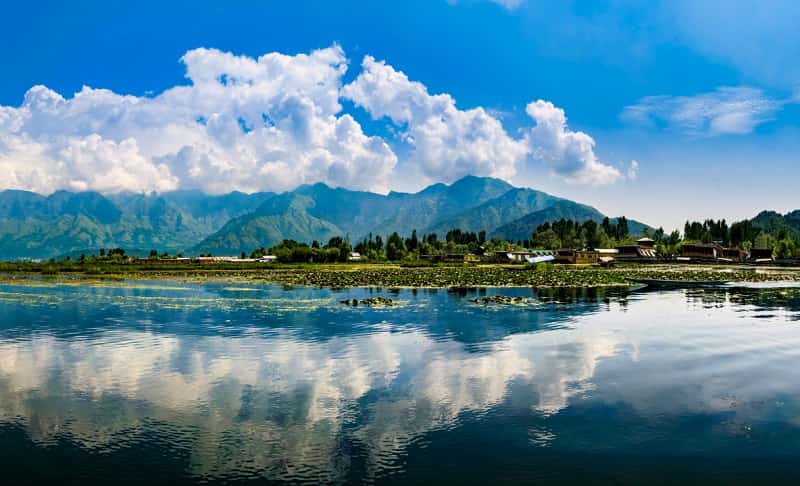
Attractions of the Lake
Captivating Surroundings
Flanked by majestic mountains from three sides and adorned with breathtakingly beautiful gardens of Mughal era, Dal Lake has been visited by thousands of tourists every year who come to explore this exceedingly beautiful place. Known by the name of “Kashmir’s jewel”, the lake is formed by a combination of several basins which are well connected with each other. The shoreline of the lake is extended to about 15 km; the lake itself encompasses an area of about 18 square kilometer. Four causeways that divide it into many parts include Bod Dal, Nagin, Lokut, and Gagribal.
A prominent feature of the lake is the presence of a big catchment area which is sprawled over an area of 316 sq km. This shallow lake is fed by several streams like Dachigam, Dara Nala, and many others.
Houseboats
Famous for its grand houseboats and lovely Shikaras which are dotted throughout the lake, the lake offers the tourists the pleasures of royal comfort and amenities. Some of the houseboats are even available for rent. Made in wood, they are adorned with extensive carvings and wood paneling. Some of these are big enough to accommodate several bedrooms and kitchen. These structures have a direct link with the culture of this state. Some of them offer luxurious stays to their customers. Fitted with all the modern amenities, the houseboats are fitted with boats that take the tourist into the vast water expanse. Usually, the boats are navigated by men dressed in traditional wear. Most of the shikaras are embellished with flowers and have cushioned seats. The facility of traveling in shikaras is totally cost-free.
Wildlife
Dal Lake is rich in marine life which plays an important role in maintaining the ecosystem. The flora here consists of submerged epiphytes, phytoplankton and macrophytes. In fact, there are more than 110 species of these macrophytes that are known to exist in the water of the lake. Lotus and other floating plants can be seen blooming during Monsoon season. The catchment area abounds in vegetation of rose, ephedra, pinus, daphne, and celtis. Among the floral population, different species of fish, zooplanktons, and benthic animals are common.
Floating Gardens
The profuse vegetation that floats all over the lake surface makes the appearance of lake like a floating garden. Matted vegetation including lotus, cucumbers, melons, and tomatoes that are seen floating over water surface offers an amazingly beautiful view.
Nearby Attractions and Activities
Apart from enjoying swimming; there are several water sports that one can go for. Boating, kayaking, skiing, and canoeing are practiced by the tourists. Dal Lake is an excellent summer resort that attracts the tourists by plethora of attractions that are present on the lake shore. Hazratbal Shrine, Shankaracharya Temple, Harris Parbat, Nagin Lake and Chashme Shahi are the nearby attractions that one can visit. Chashme Shahi is the freshwater body that is famous for its exclusive medicinal properties. Blessed with lovely fountains and waterfalls, this place was built by Mardan Khan in such a way that water of the spring acted as a source to fountains.
Economic Significance
The Lake has profound socio-economic importance for the local inhabitants and economy of the state. The state earns huge revenues for the tourism that this lake supports. Fishing industry is in full vogue at Dal Lake. In fact, it is the second biggest industry of the state. Majority of population is dependent on fishing for their livelihood. The fish that is caught frequently is carp which accounts for more than 70% of the total fish variety.

